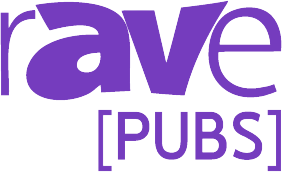The Challenge of Audio Visual and Information Technology Convergence: A New Era of Unified Technology
THIS IS A PROMOTED POST

By Warren Clark, Vice President & General Manager
Liberty
In today’s fast-paced digital landscape, organizations are challenged with fragmented systems that force audio-visual (AV) staff to wrestle with projectors while information-technology (IT) teams struggle to maintain network-connected devices. Demand for unified platforms that deliver seamless user experiences, uncompromising security and proactive uptime management has never been higher. This is the challenge that modern leaders face: how to integrate diverse technologies into a cohesive, efficient system.
Unifying the Technology Landscape
Gone are the days of separate dashboards for audio processors, video distribution and control systems. The need for a single, intuitive web console that brings every IP-addressable device, AV, UC and IoT, into one platform is paramount. By standardizing room design and exporting executive-ready reports on utilization, uptime and return on investment, organizations can roll out consistent, campus-wide footprints in hours rather than weeks.
Proactive Monitoring and Management
The ability to detect anomalies in real time — such as firmware drift, rising latency and synchronization lapses — allows IT leaders to schedule preventive maintenance instead of chasing unplanned outages. This proactive approach slashes repair times and keeps service-level agreements intact. Extending these insights into unified communications modules like Teams, Zoom and Webex ensures that issues are addressed long before they become complaints.
Security Designed from the Ground Up
In an era of relentless cyber threats, security cannot be an afterthought. End-to-end
encryption, role-based access controls and automated vulnerability assessments must be embedded. Network segmentation isolates mission-critical AV gear from general traffic, creating fortified enclaves around sensitive devices. This approach ensures that every camera, display and microphone sit behind a digital moat.
Facilitating Seamless Collaboration
Technology shines brightest when it brings people together. Integrating natively with leading collaboration suites via open APIs allows room booking, scheduling and usage analytics to happen seamlessly. AV technicians, IT support teams and end users all operate from a shared playbook, underpinned by cross-departmental reporting that validates the business impact of AV/IT investments.
Remote Troubleshooting and Efficiency
Complex environments breed complex problems such as network glitches, user errors and firmware mismatches. The ability to troubleshoot and remediate from anywhere in seconds is crucial. Integrated scripting, one-click patch deployment and safe roll-back capabilities become simple remote actions. Automating repetitive tasks like firmware updates or configuration changes empower teams to innovate instead of firefight.
The Strategic Role of Integrators
No technology platform reaches its full potential in isolation. AV/IT integrators design, configure and optimize solutions to each client’s unique needs; mapping room standards, fine-tuning alert thresholds and establishing network zones. This partnership not only delivers superior service-level agreements but also unlocks recurring revenue streams as organizations lean on integrators for continuous tuning, training and support.
AI-Driven Intelligence at Scale
Underpinning every capability is the embedded AI engine. Tailoring alerts to organizational priorities and delivering on-demand insights across departments transforms spreadsheets into dynamic dashboards. From a single huddle room to an entire campus, AI automation streamlines workflows, anticipates issues and optimizes performance.
Transforming Campus-Wide Operations
Consider a university overseeing 300 lecture halls. AI-driven reports flag underperforming endpoints before students even log on. Automated asset inventories feed directly into procurement, ensuring replacements and upgrades happen on schedule. Standardized room templates allow new buildings to go live in days — not weeks — freeing AV/IT professionals to focus on strategic initiatives instead of reactive maintenance.
Looking Ahead: Shaping the Future of AV/IT
AV and IT convergence isn’t a distant goal — it’s today’s operational imperative. For IT managers, directors and integrators committed to driving efficiency, reliability and innovation, unified platforms are more than tools: they are the blueprint for the next era of technology synergy.
Solution
Liberty’s CX Unify arrives at a pivotal moment in AV/IT history, delivering a purpose-built, web-based RMM platform that unites three core capabilities: proactive monitoring, centralized management and automated remediation. Its IP-addressable, device-agnostic architecture lets integrators and end customers, from small businesses to large institutions, keep every endpoint and unified-communications system under real-time, 24/7 surveillance. A single-pane-of-glass dashboard surfaces alerts, tracks key device details, and drives AI-powered workflows that reduce vulnerabilities, minimize downtime, and streamline decision-making via actionable, cross-departmental reports. Enhanced security features — SSO and two-factor authentication — sit alongside flexible user and role controls for multi‐client, cross‐account administration. Built-in room templates, file/document management, exportable analytics, and natural-language API integrations make it easy to deploy standard room types, mine deeper insights, and automate routine tasks. By wrapping rock-solid monitoring and remediation, seamless collaboration and intelligent automation into one cohesive offering, CX Unify truly fulfills the promise of AV/IT convergence.



